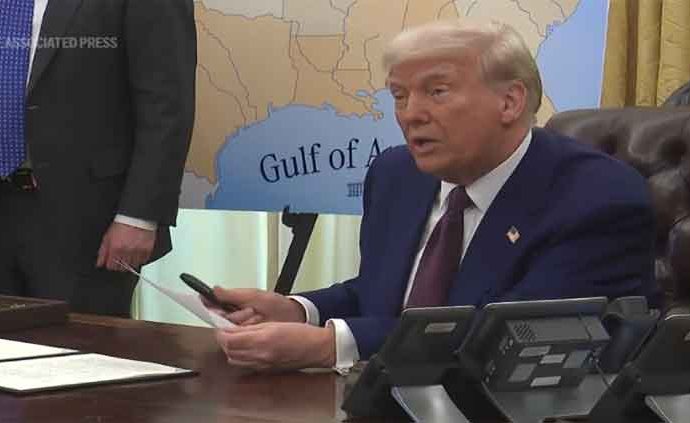Washington (AP) — With his flurry of tariffs, government layoffs, and spending cuts, there are mounting concerns that President Donald Trump is doing more to hurt the US economy than to help it.
The labor market remains strong, with a 4.1% unemployment rate and 151,000 new jobs added in February, and Trump loves to refer to investment promises from Apple and Taiwan Semiconductor Manufacturing Company as proof that he is achieving results.
However, Friday’s employment data revealed that the number of persons working part-time due to economic conditions increased by 460,000 last month. 16,000 jobs were lost in the leisure and hospitality industries, which represent customers’ greater spending power.In addition, the federal government lowered its payrolls by 10,000, which might be a sign of the stock market, consumer confidence, and other indicators of the economy’s future.
Since January, the economic policy uncertainty index has risen 41% to 334.5, a level that previously indicated a recession. Nicholas Bloom, a Stanford University economist and co-developer of the uncertainty index, expressed concern about how this will play out.
For his part, Trump appears to be at ease with the uncertainty he is creating, claiming that any financial pain caused by import duties is only a “disruption” that would eventually lead to more manufacturers migrating to the United States and faster growth.
If Trump’s gamble works, the Republican would solidify his reputation as an unusual leader who defied critics. However, if Trump’s tariffs fail, ordinary Americans would bear the brunt of the cost, which might include job losses, lower wages, greater inflation, and, potentially, a weakened sense of national pride.
In an interview set to appear Sunday on Fox News’ “Sunday Morning Futures,” Trump was urged to clarify his tariffs agenda, which has produced anxiety. The president mainly hedged his response, blaming the 6% decrease in the stock market over the previous two weeks on “big globalists.”
“You know, the tariffs could go up as time goes by, and they may go up and, you know, I don’t know if it’s predictability,” said President Donald Trump.
The White House claims that Friday’s employment data demonstrated that the administration’s plan is working, as manufacturing gained 10,000 jobs. The car sector contributed 8,900 jobs to the manufacturing growth, somewhat offsetting the industry’s employment losses in January. The White House also claimed that the loss of leisure and hospitality employment was due to the flu season and people’s depleted finances and credit card debt as a result of President Joe Biden’s tenure.
“I thought it was a really, really impressive jobs report,” Kevin Hassett, head of the White House National Economic Council, said about Friday’s figures.
Hassett stated that the increased factory employment were the consequence of corporations “on-shoring” operations due to the impending tariffs.
“This is the first of many reports that are going to look like this,” Hassett said of industrial hiring.
The stock market selloff casts question on whether tariffs will generate the promised employment.
“Markets anticipate,” explained John Silvia, CEO of Dynamic Economic Strategy. “The journey down the dark path of tariffs indicates increased inflation, slower economic development, and a weaker US dollar. “It’s a slow-motion economic horror film.”


